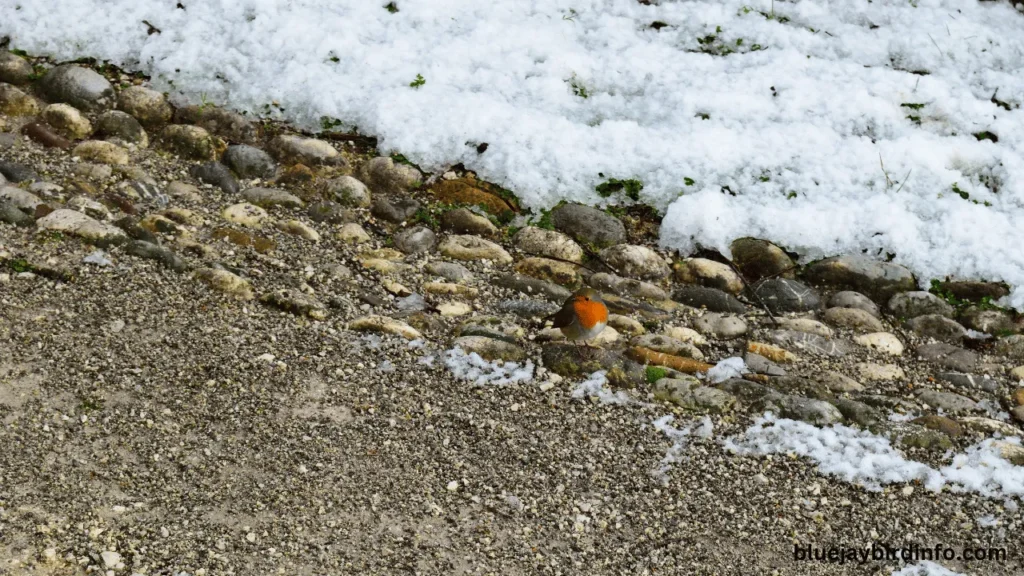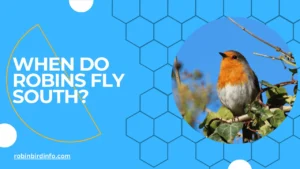The lazy days of summer are slipping away, replaced by a crispness in the morning air.
We watch the vibrant green leaves begin their slow transformation into fiery hues of orange and red. But as the world around us prepares for winter, a question pops into our heads: Where do the Robins go in August?
These cheerful songbirds, a familiar sight in our backyards, seem to vanish as mysteriously as they arrived in the spring. Do they all embark on a grand southern adventure, leaving our gardens silent? The answer, like many things in nature, is a bit more nuanced.
Understanding Robin migration patterns can not only satisfy your curiosity but also help us appreciate the complex lives of these feathered neighbors. So, grab a cup of tea, settle in, and let’s unravel the fascinating mystery of where Robins go in August!
Contents
Robin Migration Patterns
While some Robin populations are resident, meaning they stay in their breeding territories year-round, others are migratory. Migratory Robins typically breed in northern regions during the summer and then migrate south to warmer climates for the winter.
The timing of migration varies depending on factors such as temperature, food availability, and day length. As days shorten and temperatures drop, many Robins begin their southward journey.
Migratory Robins follow specific migration routes that are influenced by geographic features, weather patterns, and food availability. These routes can vary in length and complexity, depending on the destination and the individual bird.
Wintering Grounds
Migrating Robins seek out wintering grounds that offer suitable habitat and abundant food resources. They often choose areas with mild climates and plentiful fruit-bearing trees and shrubs.
Food availability is a crucial factor in selecting a wintering ground. Robins rely on fruits, berries, and insects to sustain themselves during the winter months.
Shelter and protection from predators are also important considerations. Robins may seek shelter in dense vegetation, or they may roost communally with other birds for warmth and safety.
Challenges Faced During Migration
Migrating Robins face a variety of challenges during their journey. Adverse weather conditions, such as storms and strong winds, can pose significant risks.
Predation by birds of prey and other predators is another threat. Migrating birds are particularly vulnerable to attacks, especially when they are fatigued or weakened.
Food availability can also be a challenge, especially during periods of inclement weather or when food resources are scarce.
Adapting to Winter
To survive the harsh winter conditions, Robins have developed several adaptations. They may reduce their activity levels to conserve energy and seek shelter in dense vegetation or sheltered structures.
Physiological adaptations also play a role in winter survival. Robins can increase their metabolic rate to generate heat and maintain body temperature. They may also fluff up their feathers to create a layer of insulation.
Human assistance, such as bird feeders, can provide supplemental food for Robins during the winter. However, it’s important to offer appropriate food and maintain clean feeders to prevent the spread of disease.
Conservation Implications

Habitat loss is a major threat to Robin populations, both during migration and wintering. The loss of forests, woodlands, and other natural habitats can reduce the availability of food and shelter.
Climate change can also impact Robin migration patterns and breeding success. Changes in temperature and precipitation patterns may disrupt the timing of migration and the availability of food resources.
Conclusion
To conserve Robin populations, it’s important to protect their habitats, reduce the use of pesticides, and promote sustainable land-use practices. By understanding the challenges faced by migrating Robins, we can take steps to ensure their survival and protect these beloved birds.
FAQ’s
Do all Robins migrate?
Not all Robin populations migrate. Some populations, particularly those in milder climates, may be resident year-round.
When do Robins typically migrate?
The timing of Robin migration can vary depending on factors like weather conditions and food availability. However, many Robins begin their migration in late summer or early fall.
How far do Robins migrate?
The distance that Robins migrate varies depending on their starting location and wintering grounds. Some Robins may only migrate a short distance, while others may travel hundreds of miles.
What are the dangers that Robins face during migration?
Migrating Robins face various dangers, including collisions with buildings and vehicles, predation by birds of prey and other predators, and harsh weather conditions.
How can I help migrating Robins?
You can help migrating Robins by providing food and water, maintaining clean feeders, and avoiding the use of pesticides. Additionally, you can create a bird-friendly habitat by planting native plants and providing shelter.
Why do some Robins stay in one place all year round?
Some Robin populations are resident, meaning they stay in their breeding territories year-round. This is often due to the availability of food and mild winter climates.








